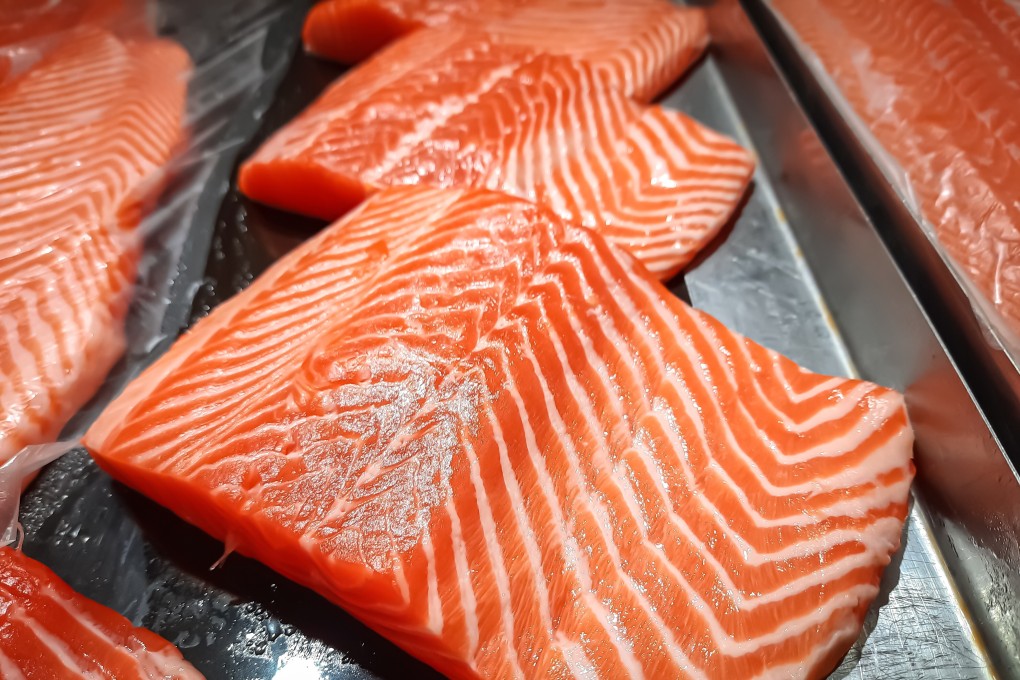Coronavirus on chilled salmon may be infectious for over a week
- The non-peer reviewed paper suggests that refrigerated salmon could be a source of international transmission
- China imported between 40,000 to 100,000 tonnes of the fish before the coronavirus pandemic

A team of Chinese researchers has found the coronavirus that causes Covid-19 can survive for more than a week on the surface of chilled fresh salmon, raising implications that it could be a source of international transmission.
The experiment discovered that the virus remained infectious for eight days after being kept at a temperature of 4 degrees Celsius. The experiment also found that Sars-CoV-2, the official name for the virus, remained infectious on the salmon for two days at 25 degrees, which the researchers called “regular room temperature”.

01:58
Salmon import ban and partial lockdown for Beijing after new Covid-19 cases in Chinese capital
“Under such condition, (coronavirus) contaminated fish from one country can be easily transported to another country within one week, thus serving as one of the sources for international transmission,” said the Chinese scientists led by Dr Dai Manman in a non-peer-reviewed paper published in biorxiv.org on Monday.
“This calls for strict inspection or detection of (the coronavirus) as a critical new protocol in fish importation and exportation before allowing sales.”
Two of China’s coronavirus outbreaks – the initial outbreak in Wuhan and a later spread in Beijing in June – have both been associated with wet markets that sold seafood.
The first strain of SARS-CoV-2 was detected in the Huanan Seafood Market in Wuhan at the end of last year. Numerous international studies suggested the virus emerged elsewhere, most likely outside Wuhan.